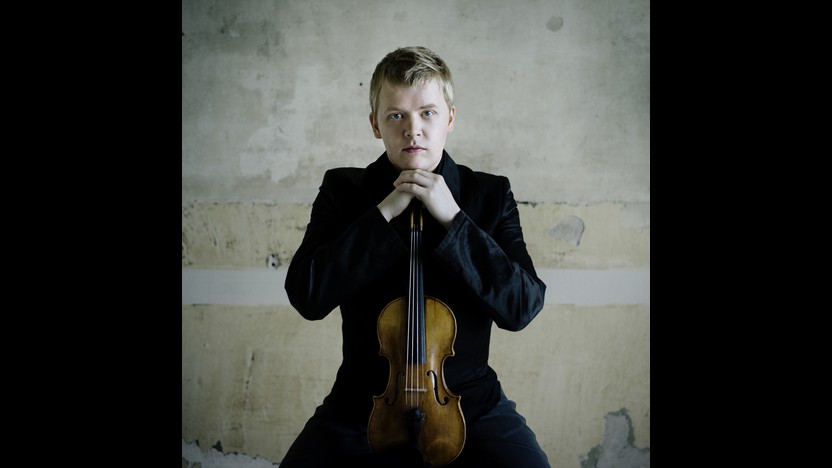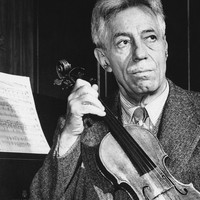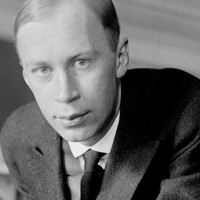Pekka Kuusisto: Time Machine


 Listen to Audio
Listen to Audio
During his long tenure with the Esterházy family, Franz Joseph Haydn spent much of his time dutifully entertaining his patrons at a remote country estate. He encountered a vastly different environment during his two visits in the 1790s to London, a bustling city that welcomed him as a celebrity. Contrasting the lofty, refined tastes of the Austrian nobility, London audiences favored splashy and spectacular entertainment — ranging from revivals of George Frideric Handel oratorios involving hundreds of performers to popular caricatures such as The Beggar’s Opera. Haydn, in his second set of “London” symphonies, seemed to respond to English tastes by writing music with extra panache. He added the robust tone of clarinets in all but one symphony, and he incorporated flashy gestures that inspired nicknames still associated with several works: Military (Symphony No. 100), The Clock (Symphony No. 101) and Drum Roll (Symphony No. 103).
Haydn began the Symphony No. 101 in Vienna and completed it in London in 1794. Considering the adjustment period new music often endures before being embraced by the public, the immediate success Haydn achieved was remarkable, as evidenced by the review published in the Morning Chronicle two days after the premiere. The critic declared, “As usual the most delicious part of the entertainment was a new grand Overture [Symphony] by HAYDN; the inexhaustible, the wonderful, the sublime HAYDN! The first two movements were encored; and the character that pervaded the whole composition was heartfelt joy. Every new Overture he writes, we fear, till it is heard, he can only repeat himself; and we are every time mistaken.”
As with most of the “London” symphonies, No. 101 begins with a slow introduction. This subdued Adagio builds anticipation for the body of the first movement, which gallops in with five-measure phrases that spill over the expected subdivisions of four measures. The Andante movement, with the “tick-tock” flavor of its accompaniment, is responsible for the symphony’s nickname, The Clock. The graceful melody and steady accompaniment form the basis of a set of variations, including a dramatic, minor-key escapade that recalls Haydn’s Sturm und Drang (“storm and stress”) stylings from an earlier decade.
Haydn deserves credit for making the minuet an indispensable component of the symphony, expanding the structure from earlier three-movement models. This minuet is one of his richest, with a full-throated scoring that includes trumpets and timpani. In the contrasting trio section, a running motive recalls the main theme of the first movement.
The finale packs a typical Haydn punch: it throttles back to just strings in a piano dynamic for the first fifty-five measures, and then unleashes the full forte power of the orchestra right at a major point of arrival, with the last note of the earlier phrase doubling as the first note in a new motive. The same dovetailing trick binds another quiet string passage to an even bolder mood change, with a sudden shift to the minor key blasted by the entire ensemble at a fortissimo dynamic. Later, a hushed fugue volleys among the string sections on the way to a grand arrival, ushering in one last statement of the main theme.
Aaron Grad ©2022



 Listen to Audio
Listen to Audio
Spending the summer outside of Petrograd in 1917, the 26-year-old Sergei Prokofiev challenged himself to compose without sitting at the piano, and he used Franz Joseph Haydn as inspiration for his svelte First Symphony. This score’s nickname as the “Classical” Symphony is well-deserved, and it served as an early harbinger of the neoclassical trend that swept through modern music in the 1920s.
A leading orchestra in Haydn’s day operated out of the royal court in Mannheim, Germany, and one of their signature moves was the rising “Mannheim Rocket,” which Prokofiev mimicked with the explosive arpeggio that launches his symphony. The second theme, played by the violins as they navigate absurdly wide leaps, shows how effectively Prokofiev used parody and exaggeration to simultaneously celebrate and skewer his source material.
The Larghetto second movement centers on a singing theme that enters in the clear treble of the violins. A contrasting middle section introduces a steady trickle of sixteenth notes, and then the closing passage interweaves both sounds.
Instead of a minuet or scherzo, the symphony turns next to a Gavotte, a staple of French dance suites from the Baroque era. The finale races to the finish on a stream of whirlwind eighth notes, with interlocking rhythmic patterns and seamless handoffs between sections that make for the musical equivalent of a relay race.
Aaron Grad ©2024
Get driving directions and find nearby parking.
Find dining options close to the venue.
View seating charts to find out where you'll be seating.
Get driving directions and find nearby parking.
Find dining options close to the venue.
View seating charts to find out where you'll be seating.
